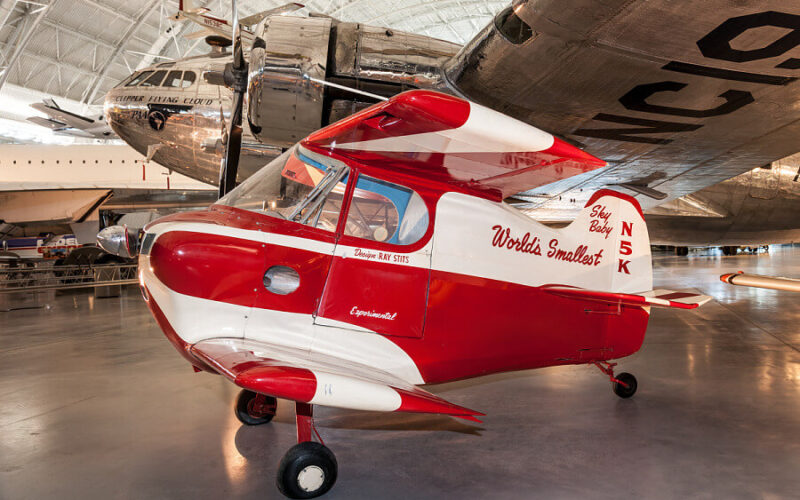When you think of an airplane, the first image coming to your mind is most likely of the infamous Boeing 737 or Airbus A320 – successful, great capacity airliners. While size matters in commercial aviation, which aims to transport significant numbers of passengers and amounts of cargo, there is also another side of the industry where small is the goal. From the early 1950s, airplanes of the most impressive proportions have been built.
Stits SA-2A Sky Baby

In 1952, with a great goal to beat the previously set record, Robert Starr and Ray Stits built the Sky Baby. There were specific requirements for this plane – one of those is that its pilot must weight 77kg to guarantee that the gravity was kept in the right place. In order to land safely and avoid the engine to stop running, its speed had to be 125mph when approaching the runway.
An incredibly small aircraft with only a 2.1-meter wingspan earned the Guinness World Record for creating the world’s smallest plane.
Starr Bumble Bee

The Sky Baby’s record stood until 1984, when Robert Starr designed the Bumble Bee. With a wingspan of as small as 2 meters, the plane took flight to Marana, Arizona that same year and claimed the Guinness World Record immediately.
Stits DS-1 Baby Bird

That same year, 1984, Ray Stits’ son, Donald Stits, decided to attempt at reclaiming the title of the World’s Smallest Airplane from Starr’s Bumble Bee. A high wing monoplane model was completely different from others. The experimental creation had a tubular fuselage construction while its wing was made from wood. The Baby Bird was a success – it performed as much as 34 flights before retiring.
Cri-Cri

A small two-engine aircraft Cri-Cri was built by an aeronautical engineer Michel Colomban in 1971. He aimed to create an economic plane that would also be able to do aerobatic manoeuvres. He succeeded and named it after his daughter Christine, whose nickname was Cri-Cri.
The aircraft features a cantilever low-wing and a single-seat cockpit, and is made of light aluminium sheet.
Bede BD-5J

A single-seat homebuilt aircraft BD-5J is a part of Bede BD-5 Micro series, created by aircraft designer Jim Bede in late 1960s. Its micro-type construction and fighter-like looks made it an international sensation and created a high demand for it. However only a few hundred orders were completed overall due to the company’s bankruptcy in the mid-1970s.
With a weight of only 162.7 kg, BD-5J holds the record for the world’s lightest single-engine jet aircraft.

